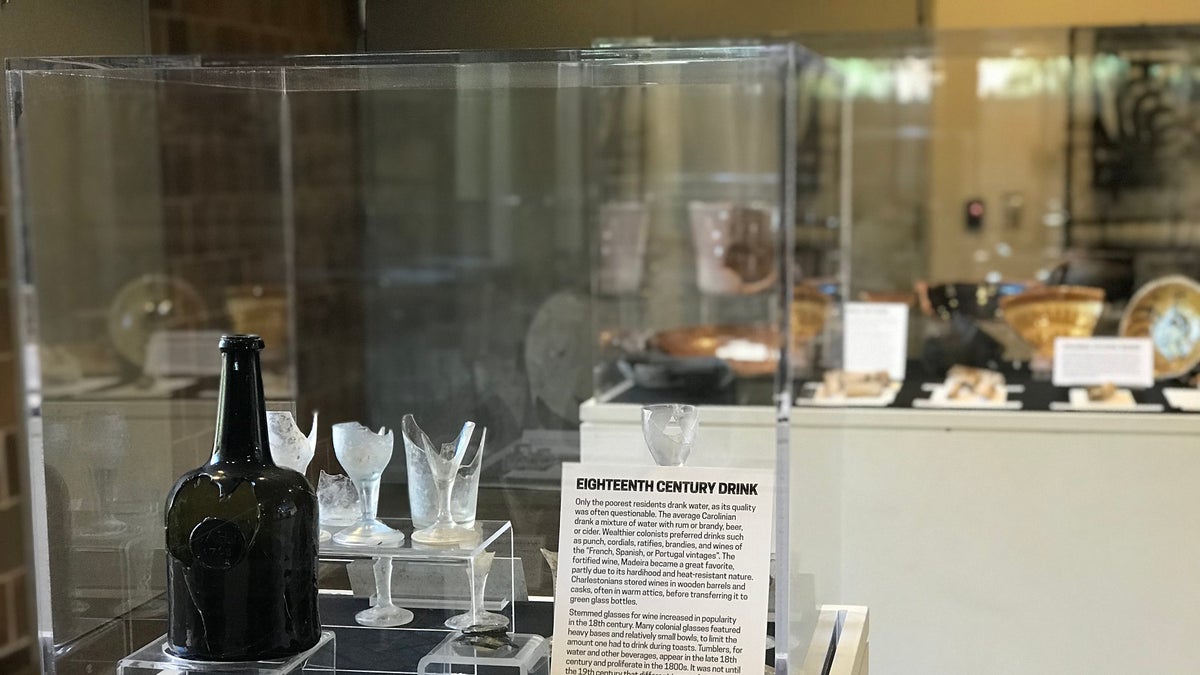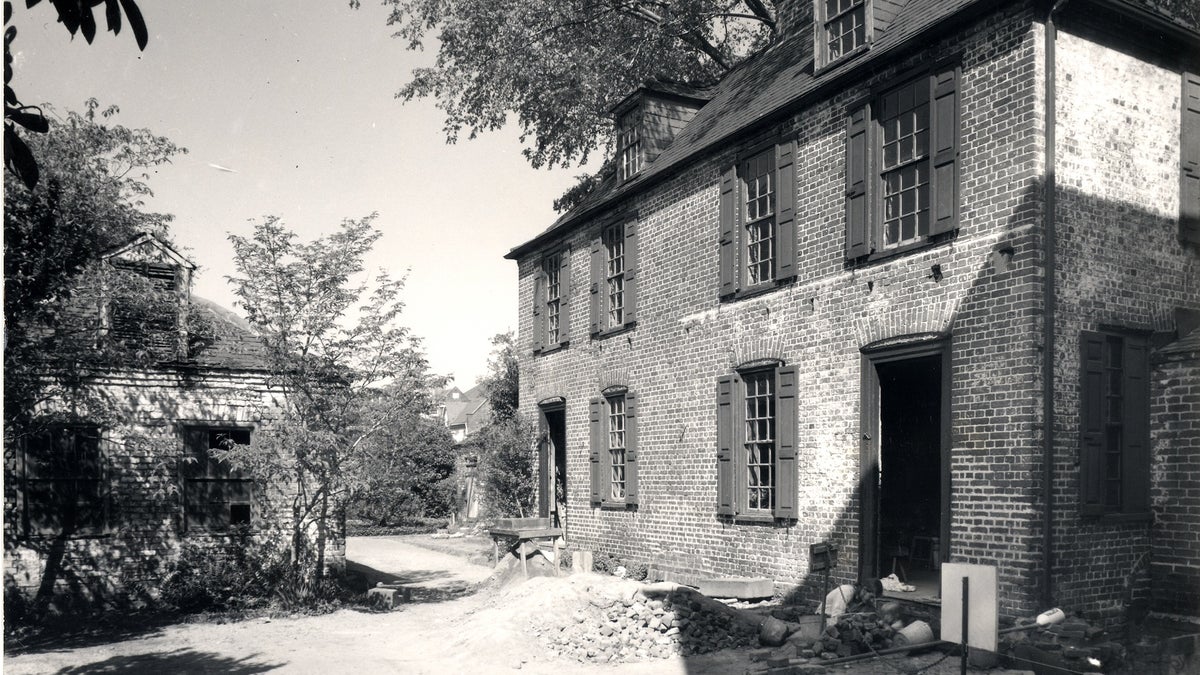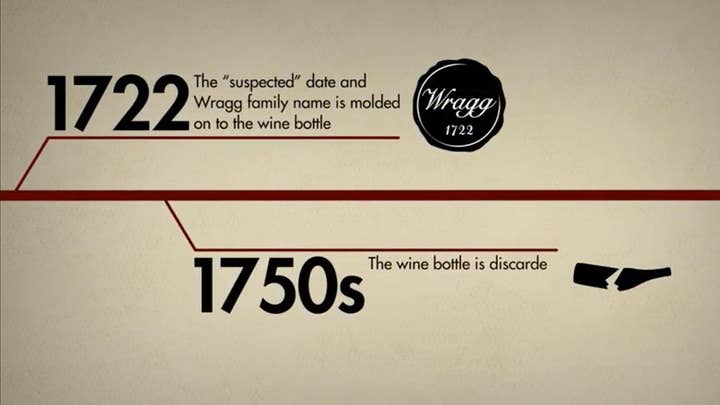Pieces of 1700s artifact found decades apart, now relinked
In 1976, an archaeologist discovered a broken glass seal, marked “Wragg,
CHARLESTON, S.C. – More than 42 years ago in this historic city, an archaeologist found a piece of a rare wine bottle seal left behind by early British colonists.
Twenty six years later, another archaeologist coincidently visited the same area and discovered a similar fragment of a seal with a name inscribed.
Nearly 300 years after the seal was designed, those two fragments from what turned out to be the same bottle have been finally been reunited — a breakthrough that archaeologists call historic and a “miracle.”
“Holy Cow! It’s kind of an archaeological miracle that that happened,” Syracuse doctoral candidate Sarah Platt said. “It’s not often that we find those kinds of pieces so far apart and that they were excavated by two separate archaeologists, 30 years apart.”

Nearly 300 years after the seal was designed, those two fragments from what turned out to be the same bottle were reunited – a breakthrough that archaeologists call historic and a “miracle.”
In 1976, a fragment of the emerald green, silver dollar-sized glass wine bottle seal, imprinted with the words “Wragg and 1722,” was discovered by archaeologist Elaine Herold during an excavation at the Heyward-Washington House.
“She unearthed just an amazing collection of artifacts, including some sealed bottles from the late 18th century,” said Martha Zierden, Charleston Museum's curator of historical archaeology.
Zierden said that what Herold had uncovered was just a fragment of an 18th-century wine bottle seal, but it stuck out as an unusual artifact since the collection did not have anything else like it.
In 2002, Zierden returned to the site and did some excavating inside the stable and carriage house, less than 50 feet away from the location where Herold had found the wine bottle fragment 26 years earlier.

In 1976, a fragment of the emerald green, silver dollar-sized glass wine bottle seal, imprinted with the words “Wragg and 1722,” was discovered by archaeologist Elaine Herold during an excavation at the Heyward-Washington House. (The Charleston Museum)
Zierden said she recovered a similar array of artifacts as Herold.
But it wasn’t until earlier this year, while Platt was reviewing the Charleston Museum’s earliest collection, that she discovered the fragment from 2002 was the missing half to the fragment found in the 70s.
“The fact that I’m coming along, almost 20 years later, and then finding it, is pretty remarkable,” Platt said. “It’s very unusual.”
She said she immediately brought it to her mentor’s attention.
“It rang a bell. So we went to our collections upstairs, found it … not only was it similar, but they matched,” Zierden said. “I don’t know of any other case of an artifact discovery like that.”
The Charleston Museum has wine bottle seals from the 18th century on display. But the Wragg seal is the earliest dated seal in the museum’s collection.

The second half of the wine bottle seal was found in 2002, less than 50 feet away from where the initial piece was discovered nearly 30 years before. (Fox News)
“Among the hundreds, thousands, probably 4 million artifacts that have come from the city that we housed, we have no more than 15 bottle seals, so that’s how unusual they are here,” Zierden told Fox News.
Wealthy British colonists had the personalized seals made and affixed to wine bottles in the 18th century. All wine bottles during the era were all hand-blown.
The seals themselves are actually an extra glob of circular molten glass. “….that glob of molten glass is affixed to the shoulder of the bottle and becomes impressed on it,” she said. “So it’s really like a round disk that sits on a bottle.”
The seals often had the owner’s last name or initials and a date.
“You know, in all my years here, there has been a couple of moments where you make a big discovery,” Zierden said. “To have some that are autographed or have a name on it are rare enough. But, then to find these two pieces mended, being discovered so many years apart and then reanalyzing them so many more years apart, it was a pretty shocking discovery and very exciting.”

The Heyward-Washington House during excavations in the 1970s. (The Charleston Museum)
Making the monogrammed bottles is extremely expensive, so historians believe only rich British colonists could afford bottles with their “signature.”
“They would certainly be a special order,” Zierden said. “We presume they were given as gifts or sort of traveled from family to family.”
The duo says there is still more work to be done, even after their big discovery.
“It’s about figuring out these people and how these things got here,” Platt said.
Platt said the next steps involve going to the archives and find out more about the family who owned the bottle.
“Who were the Wraggs that were of a certain status that are living in Charleston at this time?” Platt said. “Why would they have been interacting with the Milners at all? What does it mean that this object is here?”


